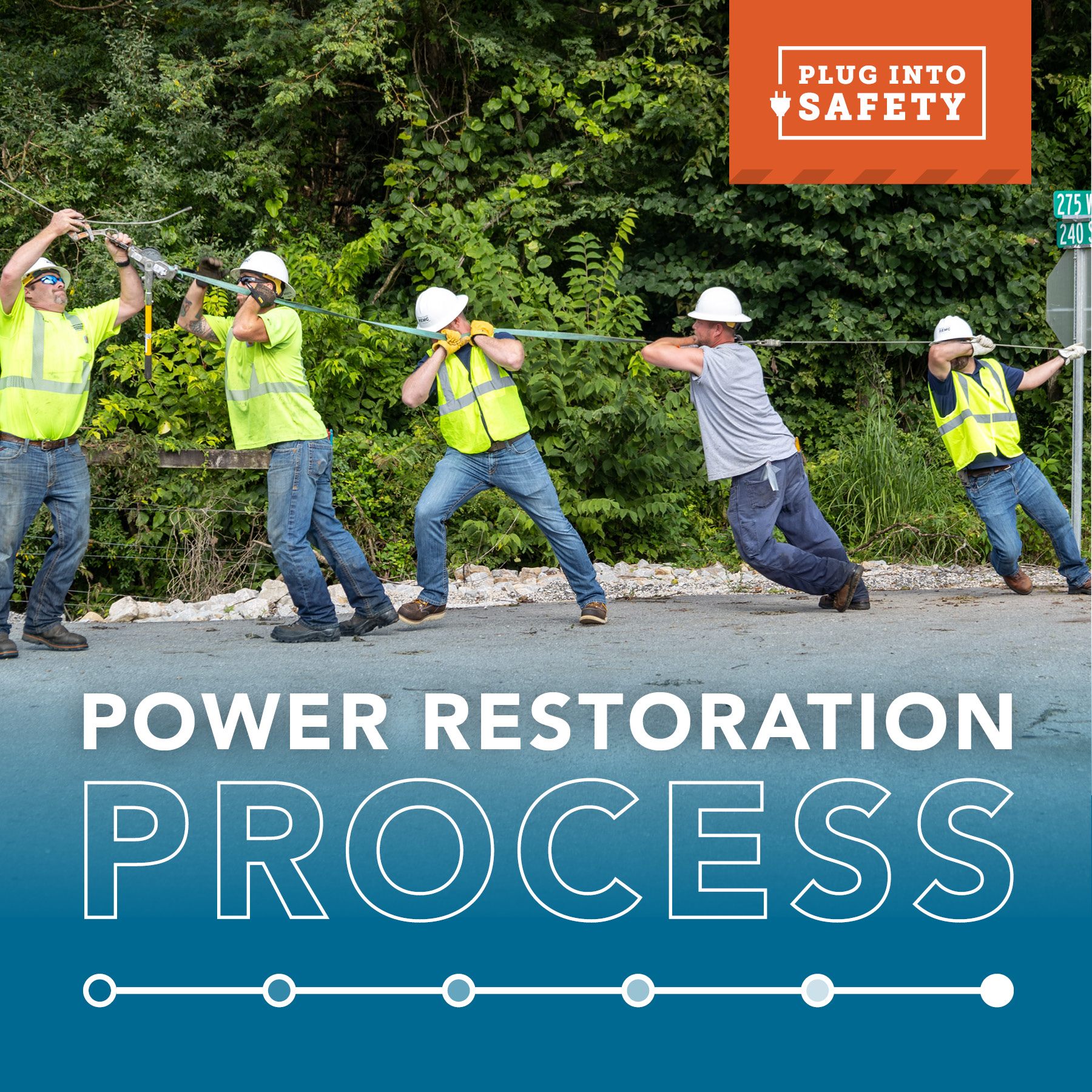
Electric safety is probably the last thing that crosses anyone’s mind on a leisurely summertime boat ride. But because water and electricity are a deadly combination, before taking off, brush up on some boating safety rules.
“It’s critical you stay away from electric power lines and other electricity sources when you go boating,” said John Gasstrom, CEO of Indiana Electric Cooperatives. “After all, besides being a popular ingredient for summertime fun, water is a good conductor of electricity. Even when you’re on a boat, electricity still tries to reach the ground below to the bottom of the body of water.”
Boaters should constantly be aware of the location of power lines. That means paying close attention when raising or lowering the boat’s mast or spar and ensuring drying sails and sheet lines don’t blow into power lines.
“When docking your boat, enlist the help of another person to help guide you at least 10 feet away from all power lines,” Gasstrom said.
Among other maritime must-dos:
- While on the water, watch for signs that indicate where underwater utility lines are located. Don’t anchor your boat near them.
- When fishing, check for overhead power lines before casting your line.
- If your boat accidentally comes in contact with a power line, whatever you do, don’t jump in the water. Stay on board and don’t touch anything made of metal. Don’t leave the boat until it has moved away from the power line.
- If you notice a tingling sensation while swimming, the water could be electrified. Get out quickly, avoiding metal objects like ladders.
- Equipment leakage circuit interrupters protect swimmers nearby from potential electrical leakage into the water around your boat. Consider installing them on your boat.
To make sure your boat’s electrical system is in ship shape, periodically have a professional marine electrician inspect it. It should meet local and state safety codes and standards. Make sure the boat’s AC outlets are three-prong. All electrical connections should be in a panel box to avoid contact. Ground fault circuit interrupters should be installed on your boat and on the dock. When using electricity near water, use portable GFCIs labeled “UL-Marine Listed.” Test all GFCIs once a month.
Danger in the water:
If there is something wrong with the wiring in or near boats or docks, the electric currents can flow into the water. Though the water molecules don’t conduct electricity, electrons are carried through the water by ions. As those electrons move, they create electrified water. When the human body comes in contact with electrified water it conducts electricity. As a result, the victim can completely lose muscle control, suffer from ventricular fibrillation and die from electric shock. That’s why you should never swim near electric-powered boats or docks.
Tips to prevent electrical injuries on boats and in the water:
- Don’t swim near docks or boats.
- If you notice a tingling sensation while swimming, get out of the water quickly and avoid metal objects like ladders.
- Don’t use frayed or damaged cords or any that have had the prongs removed.
- Install GFCIs on your boat and have them tested once a month.
- Equipment leakage circuit interrupters protect swimmers nearby from potential electrical leakage into the water around your boat. Consider installing them on your boat.
- Periodically have a professional marine electrician inspect your boat’s electrical system.
Is your boat properly equipped?
If you own a boat, it’s important to familiarize yourself with Coast Guard regulations. Complying isn’t difficult, but it does take planning. If you own a vessel measuring 16 to 24 feet, make sure the boat contains the following:
- Registration
- Lifejackets (one Type III, Coast Guard approved, per person)
- At least one Type IV flotation device (a throwable device in case someone falls overboard)
- A sound-producing device, such as a horn or whistle (preferably whistles without cork, as cork tends to swell)
- A fire extinguisher in good condition
- Flares
“When boating, it’s also important to keep in mind you’ll often find electricity nearby,” Gasstrom, warned. “Everyone knows the two don’t mix, yet thousands of accidents occur each year that result in injury or death.”
5 tips for boat owners:
- Swimming Safety: Never swim near the boat, marina or launching ramp. Residual current could flow into the water from the boat or the marina’s wiring, potentially putting anyone in the water at risk of electric shock drowning.
- Put it to the Test: Be sure your boat is properly maintained and consider having it inspected annually. Ground fault circuit interrupters (GFCIs) and equipment leakage circuit interrupters (ELCIs) should be tested monthly to ensure functionality. Conduct leakage testing to determine if electrical current is escaping the vessel.
- Use the Right Tool: Never use household cords near water. Use only portable GFCIs or shore power cords (including “Y” adapters) that are “UL- Marine Listed” when using electricity near water.
- Know Your Surroundings: Know where your main breaker(s) are located on both the boat and the shore power source so you can respond quickly in case of an emergency. Be aware of any potential electrical hazards by checking for nearby power lines before boating, fishing or swimming.
- Learn the Code: Regularly have your boat’s electrical system inspected and upgraded by a certified marine electrician to be sure it meets your local and state National Electrical Code (NEC), National Fire Protection Association (NFPA), and American Boat and Yacht Council (ABYC) safety codes and standards.





